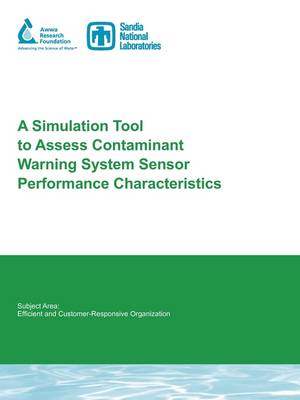Water Research Foundation Report
1 total work
A Simulation Tool to Assess Contaminant Warning System Sensor Performance Characteristics
by W. Einfeld, S McKenna, and M Wilson
Published 15 December 2008
Water utilities are faced with the ongoing need to provide safe, contaminant-free water to their customers. Contamination sources can include compromised source water that penetrates treatment barriers or intentional contamination attacks from disaffected groups or terrorist organizations. In nearly all contamination event scenarios, early detection and response can help reduce public health risk and impact. To that end, contaminant warning systems offer advantages over more traditional and slower means of contaminant detection and the ability to evaluate various contaminant warning system designs using simulation methods prior to procurement and installation is a desirable capability.
The purpose of this project was to develop a simulation tool to assess overall contaminant warning system (CWS) performance under various contamination event scenarios and to incorporate specific sensor performance characteristics in the tool to more realistically assess how sensor operational parameters can influence overall system performance. A sensor simulator was configured to mimic such sensor attributes as sensitivity, sampling rate, and drift using various mathematical and statistical algorithms. The spatial and temporal features of chemical contamination events were modeled using a pipe model of a real water distribution system and EPANET. The resulting contaminant pulse shapes at specific locations within the distribution system were combined with normal water quality background signals and processed through the sensor simulator. The sensor-altered signal was then further processed through a second event detection algorithm. Contaminant event detection statistics were then compiled and analyzed to assess overall system performance.
This study has shown that simulation methods can be successfully used to evaluate contaminant warning system designs for user-specified chemical contamination events. Specific sensor performance attributes can be configured within the simulation to allow comparison of various commercial sensor options in a utility-specific contaminant warning system design. Initial testing results reveal that most commercial sensors perform equally well in chemical contamination events of moderate intensity with sensor sampling frequency being one of the most important sensors attributes that influences overall system performance.
The purpose of this project was to develop a simulation tool to assess overall contaminant warning system (CWS) performance under various contamination event scenarios and to incorporate specific sensor performance characteristics in the tool to more realistically assess how sensor operational parameters can influence overall system performance. A sensor simulator was configured to mimic such sensor attributes as sensitivity, sampling rate, and drift using various mathematical and statistical algorithms. The spatial and temporal features of chemical contamination events were modeled using a pipe model of a real water distribution system and EPANET. The resulting contaminant pulse shapes at specific locations within the distribution system were combined with normal water quality background signals and processed through the sensor simulator. The sensor-altered signal was then further processed through a second event detection algorithm. Contaminant event detection statistics were then compiled and analyzed to assess overall system performance.
This study has shown that simulation methods can be successfully used to evaluate contaminant warning system designs for user-specified chemical contamination events. Specific sensor performance attributes can be configured within the simulation to allow comparison of various commercial sensor options in a utility-specific contaminant warning system design. Initial testing results reveal that most commercial sensors perform equally well in chemical contamination events of moderate intensity with sensor sampling frequency being one of the most important sensors attributes that influences overall system performance.
